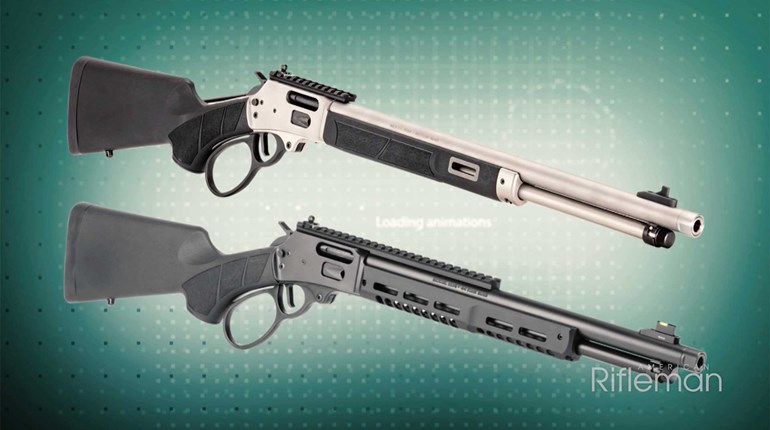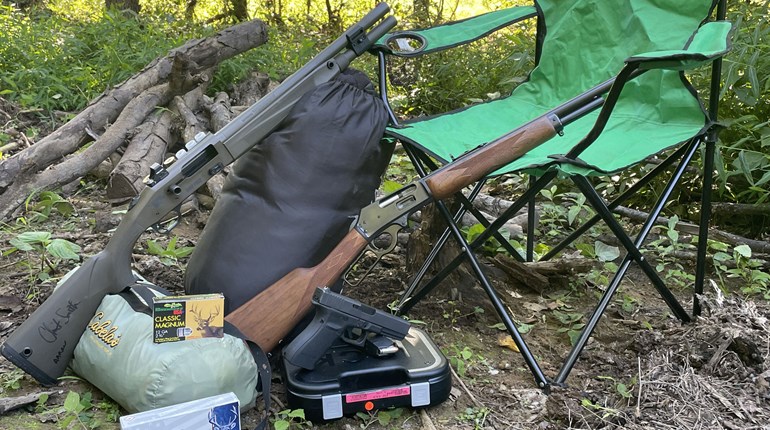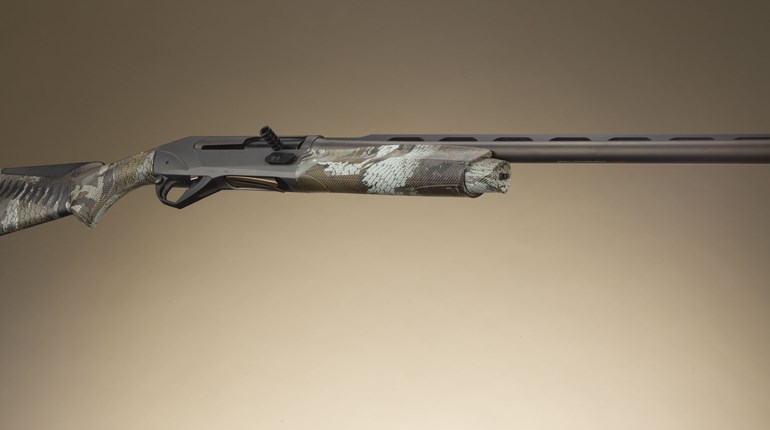
Truck gun? Who needs a truck gun? That was my initial thought when introduced to the Traditions Crackshot, a compact single-shot rimfire touted as “an excellent truck gun” by its manufacturer. I love firearms of almost every description, but I haven’t had a dedicated truck gun since I lived and worked on the Texas/Mexico border, and kept an AR alongside my seat.
Then the Crackshot arrived for testing. Hmmm, I thought. That looks like it would fit nicely between my seat and the console …

Traditions Performance Firearms is a company good at building muzzleloaders in a variety of configurations. It also produces single-shot centerfire rifles chambered in an array of cartridges ranging from .357 Mag. to .35 Whelen. It even offers build-it-yourself gun kits, a selection of single-action six-shooters designed to satisfy your inner cowboy, and cannons. That’s right, cannons. These are Civil War era reproductions and, unfortunately, are small enough to fit in your hand. But they are still cannons, by dang, and fully functional.
The Traditions rimfire lineup is simple, consisting of the Crackshot chambered in .22 LR and .17 HMR, available with or without a 4X-32mm scope pre-mounted atop the blued-steel action. Traditions also offers the Crackshot in a youth version that features a reduced, 13-inch length of pull, tailored to fit young or small-statured shooters.
I love single-shot rifles, partly because I was weaned on one, partly because they foster good habits in a shooter. In addition, they are often fully ambidextrous. I’m right-handed, but problems with my right eye caused me to switch to shooting left-handed at the age of 13. Ambidextrous rifles are hard to find, so I was enchanted right off the bat with the little Crackshot.
Its black synthetic stock has a raised comb but is absent a cheekpiece, which suits me perfectly. The break-action release is located at the fore of the trigger guard, rendering it fully ambidextrous. The cross-bolt safety (which I despise on general principles) is understandably set to accommodate right-handed shooters but, though less convenient, is still operable by southpaws.
Initially, I was slightly disappointed by the location of the hammer spur extension—designed to aid in cocking the hammer when a scope is mounted atop the barrel, placing the eyepiece over the spur proper—which was affixed to the right side of the spur. However, upon closer examination I found that the extension is removable, and can be mounted on either the right or left side of the spur with the simple turn of a screw.
The Crackshot handles nicely with the balance point falling just in front of the trigger guard. Adding to the ergonomics and handling qualities are deeply molded checkering on the wrist and fore-end, and a short, 16.5-inch barrel. The rifle shoulders smoothly and settles nicely, and at 4 pounds, 13 ounces with scope aboard, it’s light and comfortable to carry.

Metal-to-stock fit is rather good, but fit at the buttplate leaves a bit to be desired. The synthetic stock is slightly proud on the sides, while the hard rubber buttpad is a bit proud at heel and toe. Bluing on the metal frame and barrel is on par with the Crackshot’s truck gun status; it’s not the fine, lustrous blue of old, but a durable “black” bluing that will do the job. Blued steel sling swivel studs fore and aft round out the package.
Beauty is as beauty does, though, even in a truck gun, so I was excited for my testing session at the range. To my delight the little rifle performed perfectly with the exception of one dud shell, which had a deep indentation in its rim from the Crackshot’s firing pin. No fault of the rifle’s; the cartridge was to blame for the misfire. That taken into consideration, the Crackshot performed flawlessly. After each shot, the action broke open easily, the spent shell was proffered by the extractor for easy grasp, a new cartridge dropped handily into the chamber, and the action locked firmly shut again.
Accuracy wasn’t promising until I tested Winchester’s Super-X 37-grain lead hollow-point load, which averaged a bit more than 1.5 inches at 50 yards, with the largest five-shot group still well under 2 inches. Plenty accurate for hunting cottontails and wooly mammoths. The rifle was comfortable and fun to shoot, steady and natural in the hand. Formal testing completed, my 9-year-old son shot a group for fun, his accuracy giving the old man pause. No, he didn’t outshoot me, but it was close enough to make me nervous.
I have only one real complaint about the little Crackshot rifle: The trigger, while breaking at a predictable 4 pounds, is creepy. It’s gritty and takes a bit of travel to break. While not awful and not bad enough to cost you a rabbit, it’s not a great, or even a good, trigger.
That aside, the little Crackshot is well designed, well put together and durable as a digging bar—all for the price of three tanks of diesel. Bumping along the dusty dirt road toward home after my session at the range, I concluded that everyone, self included, needs a truck gun. I think I’ll see just how well the Crackshot fits between my seat and the console.
Technical Specifications
• Type: single-shot rimfire rifle
• Caliber: .17 HMR, .22 LR (tested)
• Barrel: 16.5″; sporter contour; 1:16″ RH twist
• Trigger: single-stage; 4-lb. pull weight
• Sights: none; factory-mounted base for optics
• Safety: cross-bolt
• Stock: raised-comb, black synthetic; LOP 13.75″
• Metal Finish: blued
• Overall Length: 32.5″
• Weight: 4 lbs.
• Accessories: factory-mounted 4X-32mm scope
• MSRP: $264 (as tested w/scope), $219 (w/o scope); traditionsfirearms.com






































